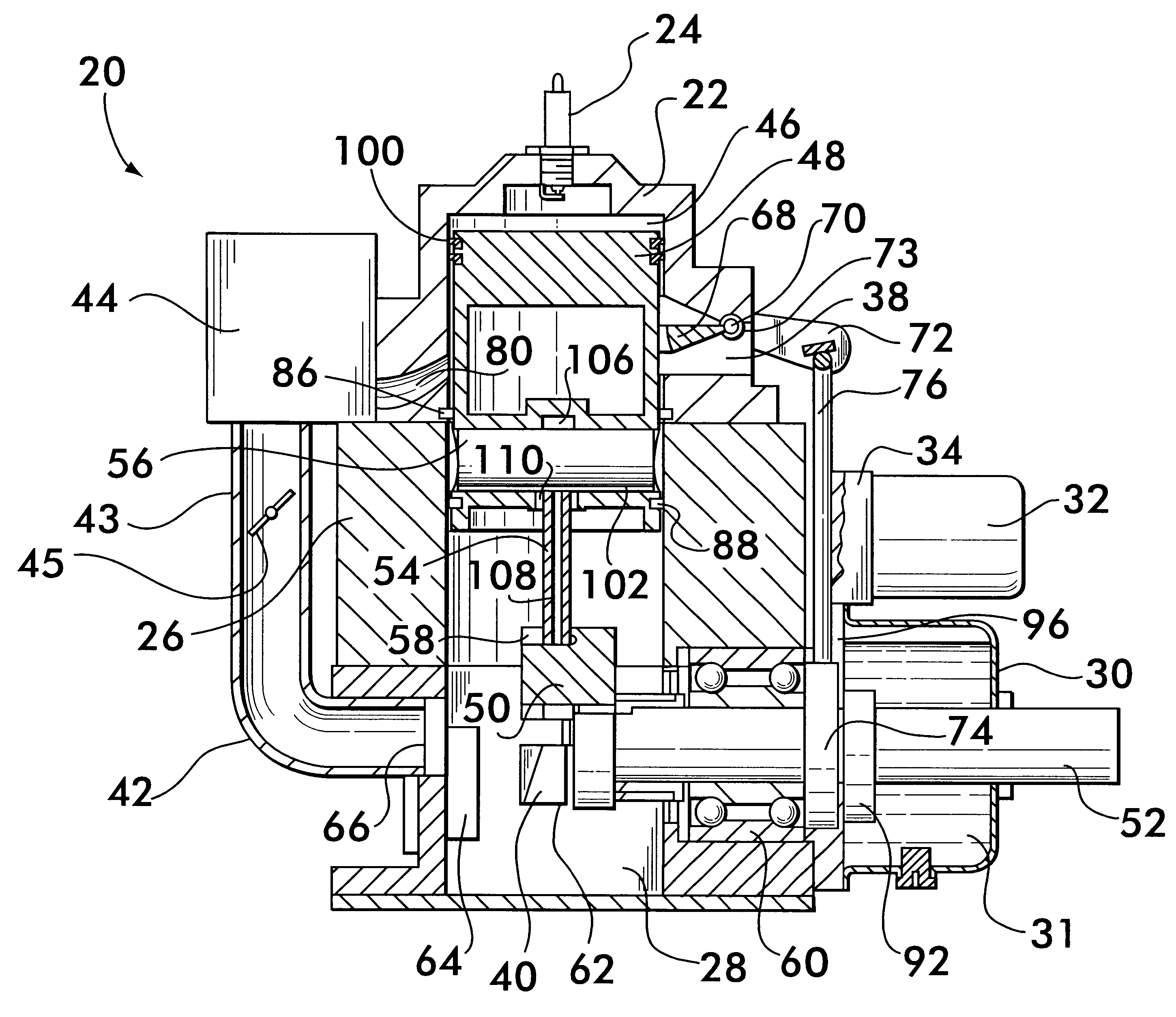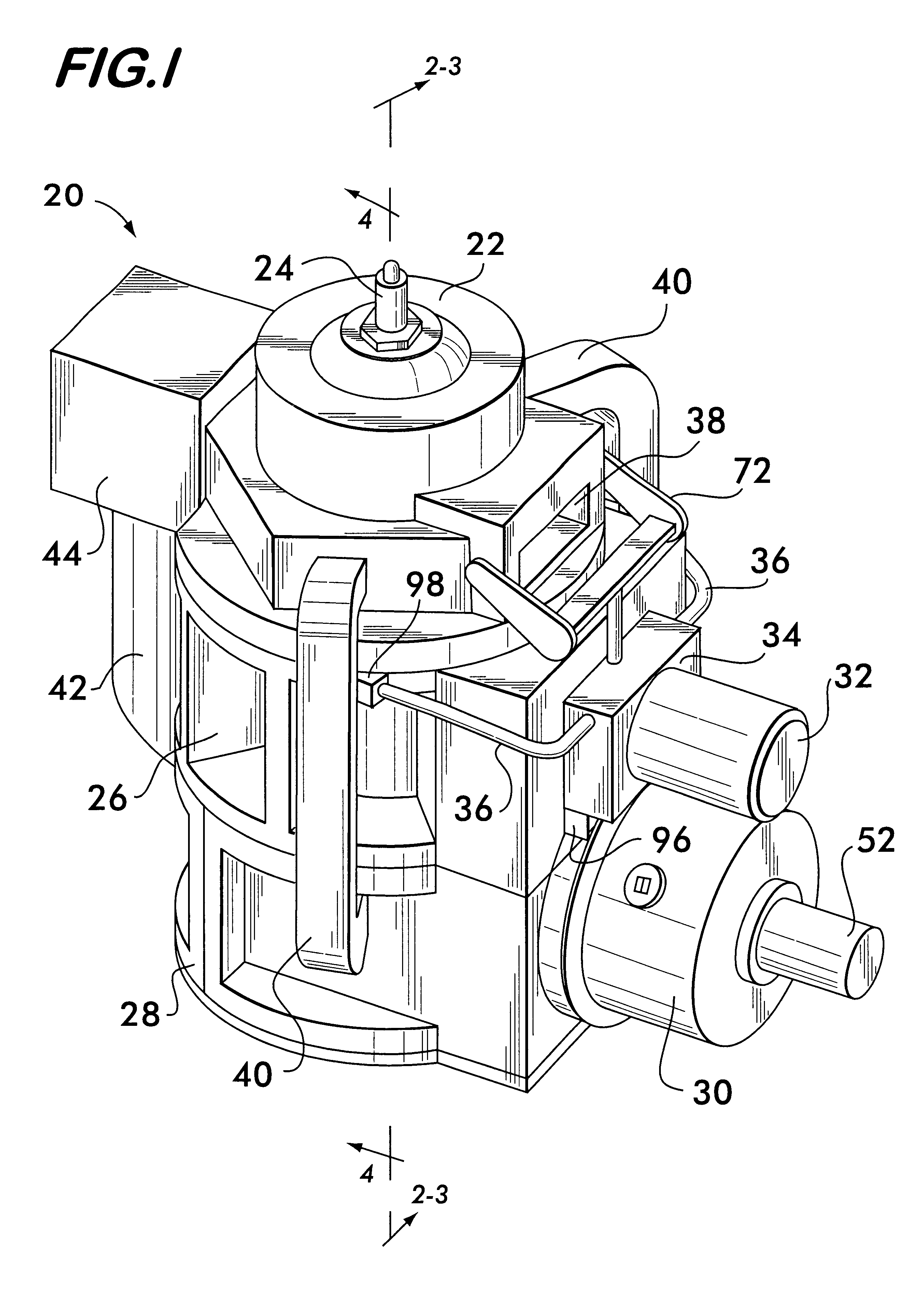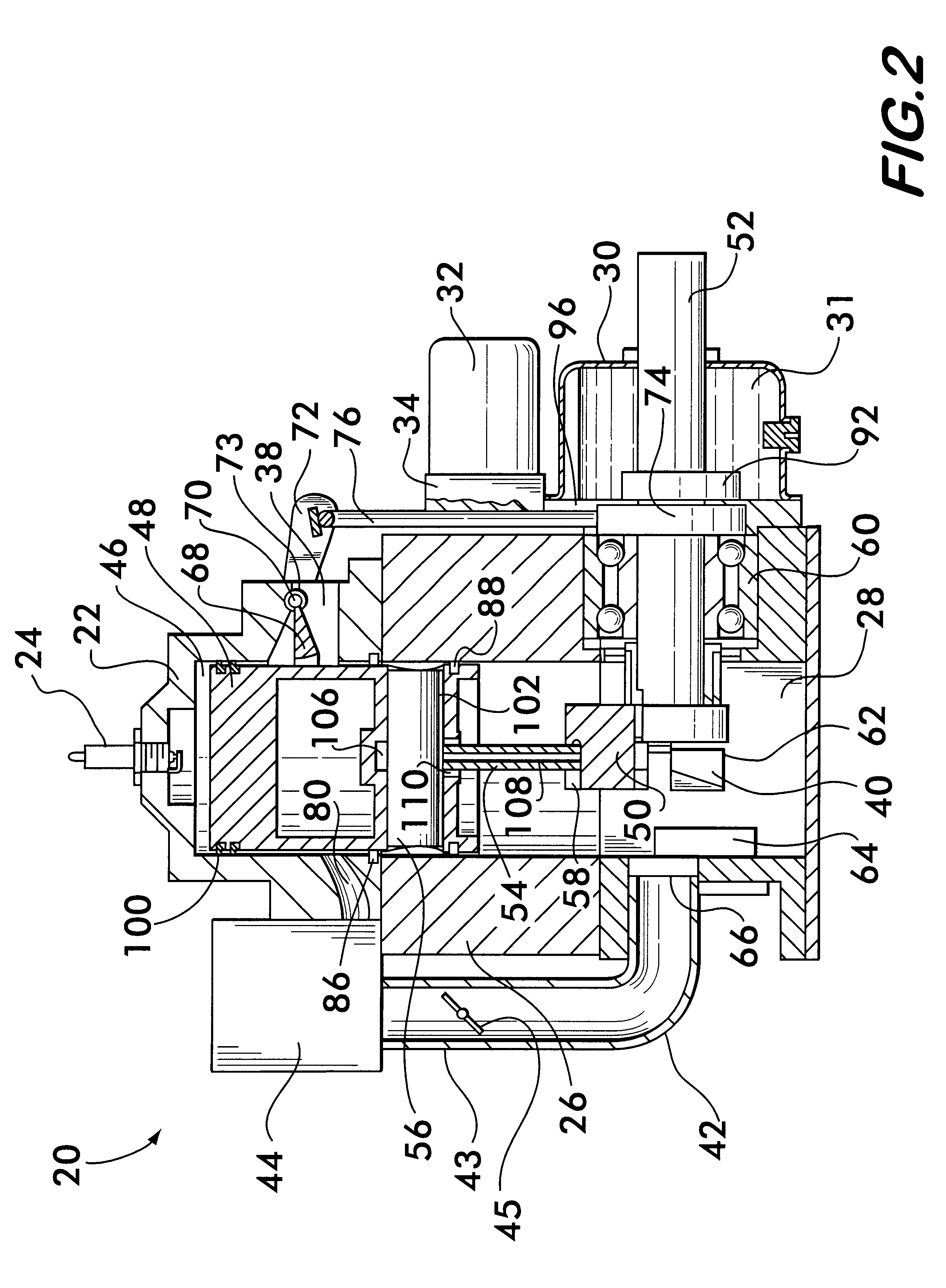Engine with dry sump lubrication, separated scavenging and charging air flows and variable exhaust port timing
a technology of dry sump lubrication and charging air flow, which is applied in the direction of crankcase compression engine lubrication, machines/engines, output power, etc., can solve the problems of direct injection of fuel into the cylinder, the system is difficult to acquire and maintain in a developing economy, and the kind of rich-lean combustion cannot be achieved in a conventional two-stroke engin
- Summary
- Abstract
- Description
- Claims
- Application Information
AI Technical Summary
Benefits of technology
Problems solved by technology
Method used
Image
Examples
Embodiment Construction
FIG. 1 shows an external view of an engine 20 according to the invention. Engine 20 comprises a cylinder 22 in which a spark plug 24 is mounted. An oil sleeve 26 is positioned immediately beneath the cylinder 22 and a crankcase 28 is attached to the oil sleeve. Preferably, an oil reservoir 30 for holding lubricating oil is mounted on crankcase 28. Associated with the oil reservoir are an oil filter 32, an oil distribution manifold 34 and oil lines 36 connecting the manifold 34 with the oil sleeve 26.
Also visible in FIG. 1 is an exhaust port 38 in cylinder 22, two scavenging tubes 40 which connect the crankcase 28 and the cylinder 22, a charging tube 42 and a fuel metering device 44. Charging tube 42 connects the crankcase to the fuel metering device 44 which supplies fuel to the cylinder 22 during engine operation. Fuel metering device 44 is preferably a carburetor but could also be a manifold fuel-injector system.
As shown in the sectional view of FIG. 2, cylinder 22 has a cylinder ...
PUM
 Login to View More
Login to View More Abstract
Description
Claims
Application Information
 Login to View More
Login to View More - R&D
- Intellectual Property
- Life Sciences
- Materials
- Tech Scout
- Unparalleled Data Quality
- Higher Quality Content
- 60% Fewer Hallucinations
Browse by: Latest US Patents, China's latest patents, Technical Efficacy Thesaurus, Application Domain, Technology Topic, Popular Technical Reports.
© 2025 PatSnap. All rights reserved.Legal|Privacy policy|Modern Slavery Act Transparency Statement|Sitemap|About US| Contact US: help@patsnap.com



